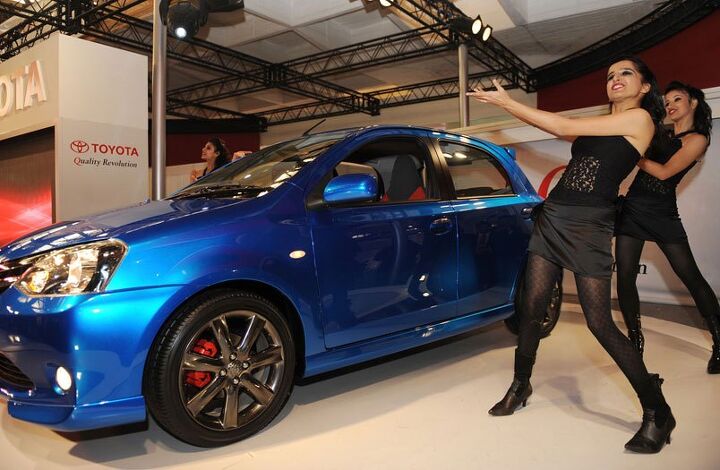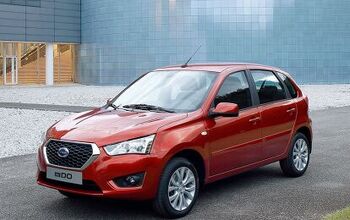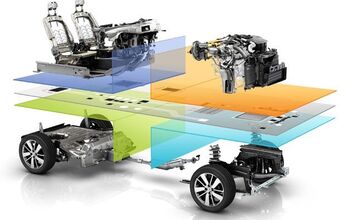Toyota To Emerge With Emerging Market Strategy

On Wednesday, March 9th, Toyota will announce its new long term strategy plan to the public. A core piece will be a push into emerging markets. TTAC has been following signs of this for a while. The signs range from a car, the Etios, designed exclusively for the emerging markets, to a factory up in the woods near Sendai, Japan, that looks very much like a prototype for Toyota’s latest export product: Low cost car factories.
The Nikkei [sub] agrees and says that “Toyota Motor Corp. is overhauling its strategy because it is now clear that emerging nations will replace industrialized ones as its most important markets.” Will replace? Wake up!
Emerging auto markets already buy more cars than the established markets. According to a J.D. Power study, emerging markets accounted for 51 percent of the global light-vehicle sales in 2010. For this year, J.D. Power expects this number to rise to 53 percent, mostly driven by China and to some degree Brazil. As other markets join the fray, this shift will accelerate.
“The main battles will be fought in Asia, where sales are set to grow the fastest in the years ahead. Whoever wins in China and India will become the biggest in the world.”
Toyota needs to shift its focus along with these developments. Toyota suddenly find itself in the wrong places at the wrong time. Toyota dominates in Japan, a shrinking market. Toyota is strong in the U.S., a market that has matured and promises no significant growth. In Europe, the world’s most competitive and crowded marketplace for cars, Toyota holds a crumbling market share of 4.8 percent, with Hyundai hot on its heels.
Toyota is a late-comer to China, they forged a joint venture with FAW and sold their first Made-in-China Toyota in 2003. According to J.D. Power, Toyota holds a 4 percent market share in China, a far cry from Volkswagen’s 12. In India, where Toyota arrived a few years earlier than in China, Toyota defends a tiny market share of less than 3 percent, whereas their colleagues at Suzuki own half of India’s growing market. In Brazil, Toyota boasts a market share of 1.9 percent. Something needs to be done, fast.
A step in Toyota’s new emerging market strategy is that Toyota will tailor the vehicles it sells in emerging markets to local tastes, writes The Nikkei [sub].
According to another story in The Nikkei [sub], and as predicted by TTAC last December, Toyota will derive five or six models from the Etios, including a minivan and an SUV. The cars will be introduced beginning next year in emerging markets in Asia and Latin America, including China and Brazil.
The new Vitz/Yaris subcompact, released last December in Japan, will be sold in Japan, the U.S. and Europe only. Too expensive for emerging markets. Instead, “Toyota plans to develop a subcompact with a 1.2- to 1.6-liter engine for release in 2013. Parts procurement costs for this model are to be roughly 20 percent lower than those for the Yaris,” says The Nikkei.
“The roads of the world make the automobile,” Akio Toyoda said. “Our goal is not to sell 10 million vehicles but to provide automobiles that 10 million customers desire.”
It will be a while. This year, Toyota’s sales are projected to reach 8.61 million units. That is only slightly up from the 8.55 million units delivered in 2010. Other manufacturers spent many decades in emerging markets and are way ahead.

Bertel Schmitt comes back to journalism after taking a 35 year break in advertising and marketing. He ran and owned advertising agencies in Duesseldorf, Germany, and New York City. Volkswagen A.G. was Bertel's most important corporate account. Schmitt's advertising and marketing career touched many corners of the industry with a special focus on automotive products and services. Since 2004, he lives in Japan and China with his wife <a href="http://www.tomokoandbertel.com"> Tomoko </a>. Bertel Schmitt is a founding board member of the <a href="http://www.offshoresuperseries.com"> Offshore Super Series </a>, an American offshore powerboat racing organization. He is co-owner of the racing team Typhoon.
More by Bertel Schmitt
Latest Car Reviews
Read moreLatest Product Reviews
Read moreRecent Comments
- Redapple2 Love the wheels
- Redapple2 Good luck to them. They used to make great cars. 510. 240Z, Sentra SE-R. Maxima. Frontier.
- Joe65688619 Under Ghosn they went through the same short-term bottom-line thinking that GM did in the 80s/90s, and they have not recovered say, to their heyday in the 50s and 60s in terms of market share and innovation. Poor design decisions (a CVT in their front-wheel drive "4-Door Sports Car", model overlap in a poorly performing segment (they never needed the Altima AND the Maxima...what they needed was one vehicle with different drivetrain, including hybrid, to compete with the Accord/Camry, and decontenting their vehicles: My 2012 QX56 (I know, not a Nissan, but the same holds for the Armada) had power rear windows in the cargo area that could vent, a glass hatch on the back door that could be opened separate from the whole liftgate (in such a tall vehicle, kinda essential if you have it in a garage and want to load the trunk without having to open the garage door to make room for the lift gate), a nice driver's side folding armrest, and a few other quality-of-life details absent from my 2018 QX80. In a competitive market this attention to detai is can be the differentiator that sell cars. Now they are caught in the middle of the market, competing more with Hyundai and Kia and selling discounted vehicles near the same price points, but losing money on them. They invested also invested a lot in niche platforms. The Leaf was one of the first full EVs, but never really evolved. They misjudged the market - luxury EVs are selling, small budget models not so much. Variable compression engines offering little in terms of real-world power or tech, let a lot of complexity that is leading to higher failure rates. Aside from the Z and GT-R (low volume models), not much forced induction (whether your a fan or not, look at what Honda did with the CR-V and Acura RDX - same chassis, slap a turbo on it, make it nicer inside, and now you can sell it as a semi-premium brand with higher markup). That said, I do believe they retain the technical and engineering capability to do far better. About time management realized they need to make smarter investments and understand their markets better.
- Kwik_Shift_Pro4X Off-road fluff on vehicles that should not be off road needs to die.
- Kwik_Shift_Pro4X Saw this posted on social media; “Just bought a 2023 Tundra with the 14" screen. Let my son borrow it for the afternoon, he connected his phone to listen to his iTunes.The next day my insurance company raised my rates and added my son to my policy. The email said that a private company showed that my son drove the vehicle. He already had his own vehicle that he was insuring.My insurance company demanded he give all his insurance info and some private info for proof. He declined for privacy reasons and my insurance cancelled my policy.These new vehicles with their tech are on condition that we give up our privacy to enter their world. It's not worth it people.”


































Comments
Join the conversation
How is Brazil an "emerging" market? There has been an established market and factories there for decades. "Growing" ≠ "emerging".
Any strategy that they make that doesn't include LOWERING the prices of their cars/parts/service and getting away with their BS "holy" image is destined to FAIL. Period. In that kind of market price on both car and parts, and service support sells. See Brazil. A Corolla, even being more modern than an Optra, is about 30-40% more expensive in Venezuela, and has less equipment. If the prices were similar, GM would have a severe run for the money in that segment. Just as an example. I really would have enjoyed visiting their new factory, I guess for the volume and techniques, that I've seen some of their tricks in the assembly sites I've worked so far.
Ford GT RIP